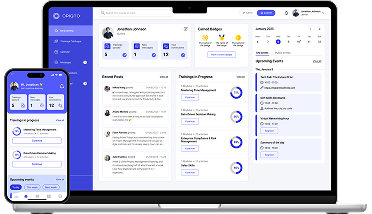After all the hard work you put into creating training materials, it would be great if you never had to change them again. But the reality is that every training module has a lifecycle, and sooner or later the content, design, and even the presentation will need to be updated.
Why do you need to worry about keeping your training modules current?
- Compliance: Regulations, processes, and standards constantly change, and your training needs to reflect the most recent changes in order to stay compliant.
- Accuracy: Technical specs, best practices, and even company policies can shift over time, requiring you to update your training.
- Engagement: Employees are less likely to connect with outdated training. If keeping training current doesn’t feel like a priority to the company, paying attention to the training won’t feel like a priority to the learner.
- Repetition: If employees have to take a training multiple times (compliance training, for example), updating it regularly will keep them from tuning it out, or already knowing the answers to quizzes.
Of course, some trainings have a shorter lifecycle than others.
Cybersecurity as a field is always changing as bad actors develop new methods of attack, so cybersecurity training needs to be updated regularly in order to be effective. On the other hand, instructions on filing expense reports will probably only need to be updated every few years.
Our greatest weakness lies in giving up. The most certain way to succeed is always to try just one more time.
Thomas A. Edison
Fortunately, it doesn’t have to be difficult to keep your training current. Here are three ways to do that.
1. Take your training digital
Instead of tracking down every old employee handbook and reprinting new ones when the company device policy changes, start digitizing your employee training program. That way, you only have to make the change in one place and the new information will replace the old.
This also helps avoid confusion and version problems, where someone may have old training handouts or manuals after you’ve rolled out new information.
2. Create modular content
Breaking your training up into smaller modules makes it easier to update certain details without having to re-do other parts of your content.
For example, if your new hire safety training is currently an hour-long recorded video lecture, the entire thing will become obsolete if one protocol changes. If you’ve created instead a series of short videos around different concepts, only the one containing the updated protocol will need to be changed.
Another benefit of modular microlearning is that it’s more engaging, and it’s easier for employees to take a training without having to commit large portions of their busy days.
3. Use a learning management system
A robust learning management system (LMS) makes it simple to keep your training current by giving you easy authoring tools for creating new modules and updating old ones. A good LMS also helps you organize your training materials so that you know exactly what’s out there when it’s time to update.
Along with making it simple to update the content, an LMS like Opigno enables you to keep your training feeling current, too.
We’re constantly adding features like gamification, interactive quizzes, adaptive learning pathways and more that present training materials in a way that speaks to modern learners.
Published on December 18, 2020
